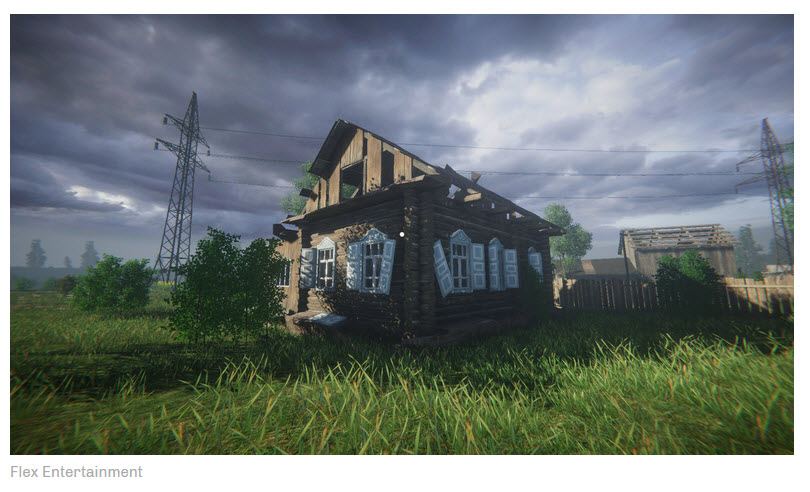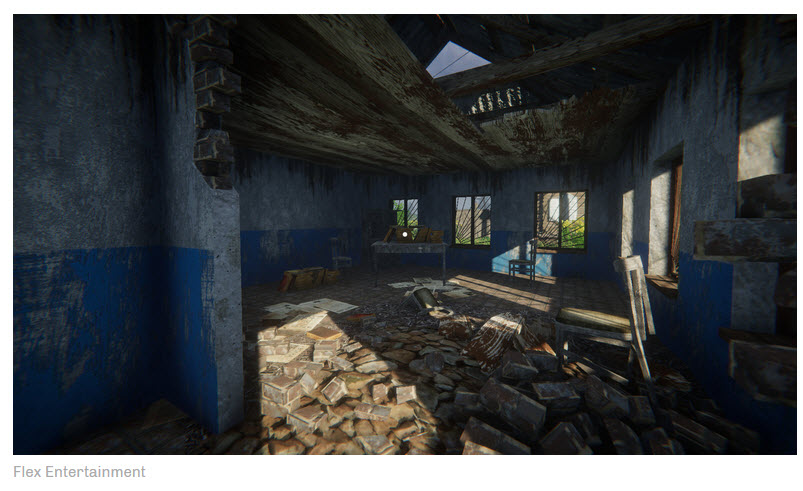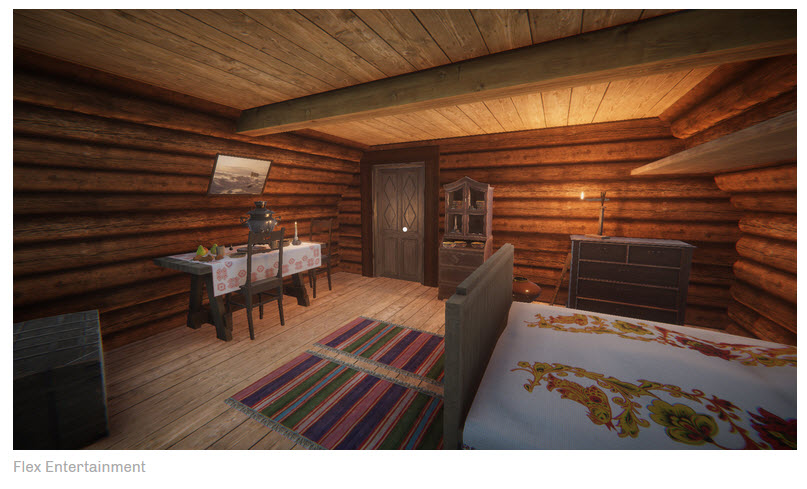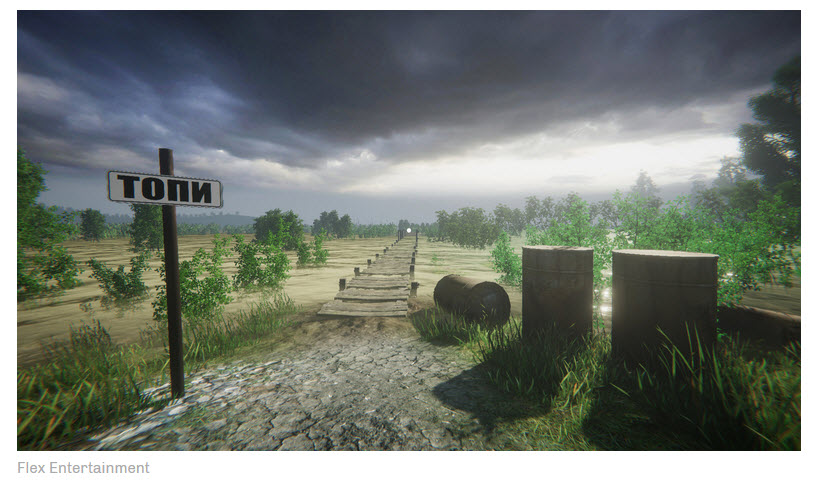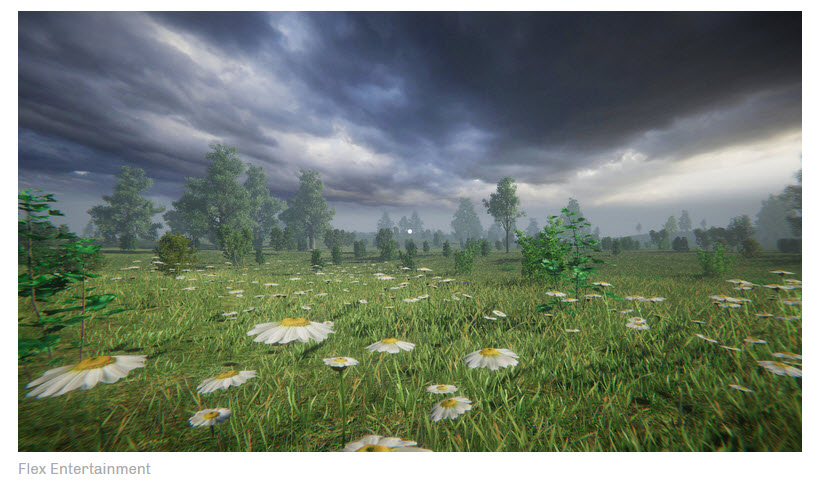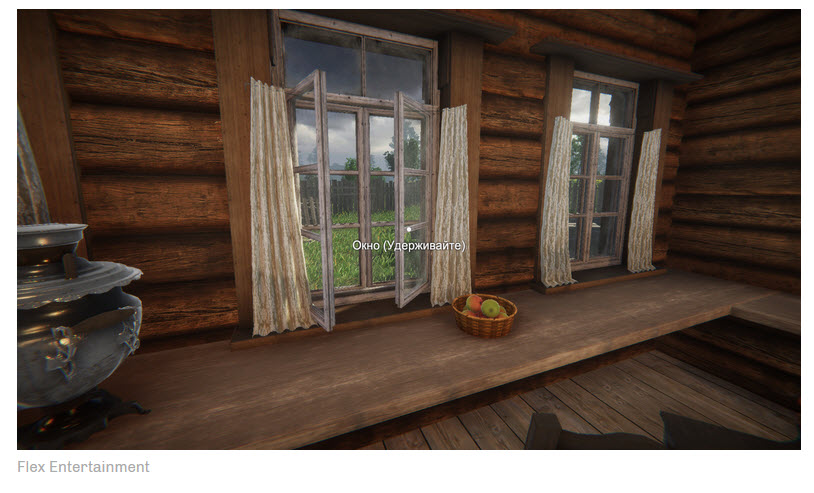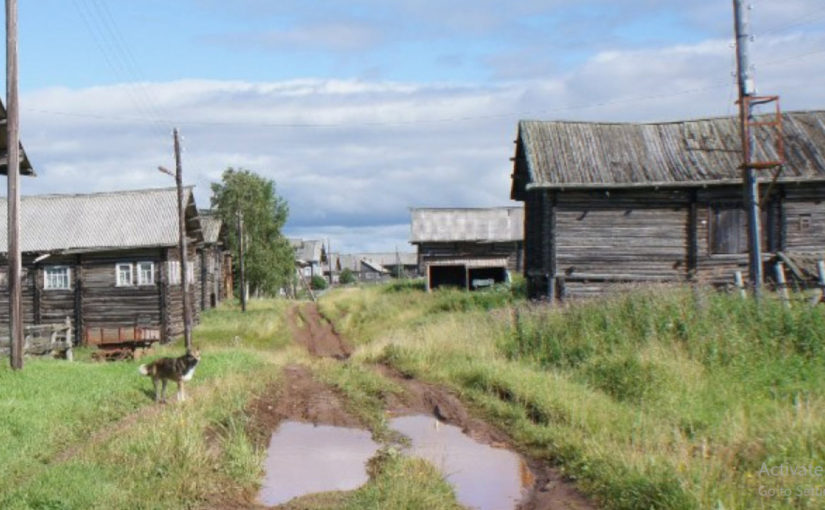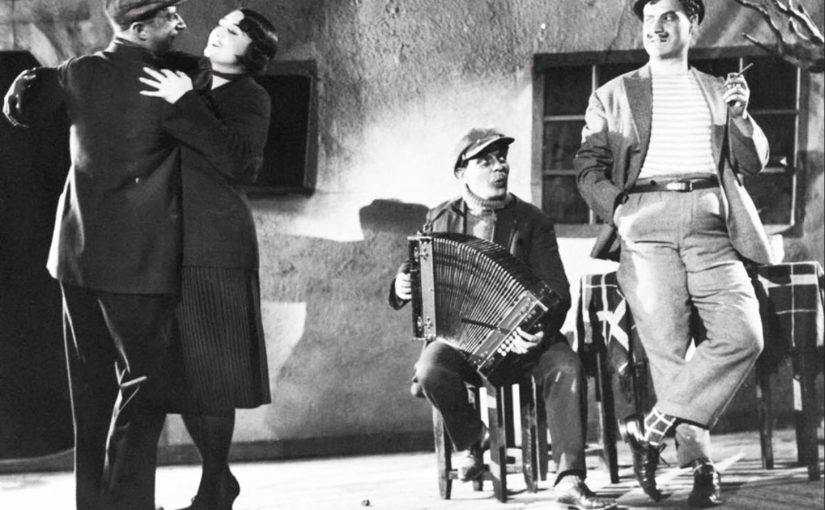Who’d figure? Right?
Well it is true. I discovered this sound while looking for information on vintage cast iron doorstops and came across an article on the subject. then I went on Kouguo and started download the tunes. Wow! Quite an unusual sound.
How to describe it?
Have you ever woken up on the couch in the middle of the night to find yourself staring at a black-and-white movie from the 1930s flickering on the TV? If so, your slumber may have been gently stirred by the film’s melancholy soundtrack.
Drifting between dream-state and consciousness, at first you may think you recognize the tinny strains of a slow Argentine tango, but then you discern a melody suggesting a Chopin nocturne, albeit one that’s been tuned to an even gloomier minor key of an Eastern European klezmer dance number. Perhaps you’re still dreaming?
In fact, you’re wide awake, and what you’re hearing is a Hollywoodized version of Polish tango.
It’s a popular genre of sentimental songs composed between 1918 and 1939 by classically trained Polish musicians.
“That’s the soundtrack of interwar Poland,”
…says Juliette Bretan, a journalist and researcher based in Lincolnshire and studying in London.
“The music is very melodramatic and really rather sad, filled with these depressing lyrics about people wanting to take their own lives, or the fights they’re having with their lovers. But it’s also a very mature sound, a very Polish sound. Had World War II not happened,”
She adds,
“I believe Polish music would’ve had an even bigger impact than it did on the global stage.”
Bretan has been on a mission to learn about her Eastern European roots.
“We know my grandmother was taken from Poland in 1941 to perform slave labor in Germany,”
Bretan says.
“We think she was in some camps for a time, but it’s very unclear. After the war, she met my granddad in a displaced-persons’ camp, but we don’t really know what happened to him before that. They married and then came here in ’46 or ’47, and that was that.”
As Bretan delved into her family’s history, Polish tango became her soundtrack.
“I stumbled onto this music purely by chance,”
she says.
“I find the sound intoxicating, so it became a connection to the world my grandparents would’ve known when they were living in Poland. On the one hand, for me, the music is like a reconnection to my heritage, but on the other hand, what is there to reconnect to? That heritage is all gone, so it’s almost like I’m writing a new history of my family.”
Bretan fell hard for Polish tango, which, in an article for culture.pl, she described as
“merging pinches of the age-old Polish romantic and sentimental melodies with Jewish inflections and a more modern, brassy sound, dripping in glissandos and vibrato.”
There is some very interesting background on all this regarding the inter-war years when Germany embraced nationalism in the form of Nazi Facism. But I really don’t have the stomach to get into that right now. I just want to enjoy the music.
History
Tango was first introduced to Poland in 1913, with the performance of Victor Jacobi’s opera Targ na Dziewczęta (Girls’ Market) at the New Theatre in Warsaw. Its popularity over the following years grew not from palpable influences, but gramophone records, the radio and newspaper reports.
This popular consumption through media prompted Polish tangos to carve their own position in the history of the nation’s music: with a lack of direct contact, pieces began to veer away from the original Argentinian form, adopting a more melancholic sound influenced heavily by klezmer, and a softer melody and harmony; replacing the underlying rhythm of the stereotypical bandoneon with a proliferation of slides and rigorous vibrato. Theirs was a journey that blossomed along with the Polish state itself – these tangos were bulwarks of a new, revitalised Polish popular culture.
In 1925, Henryk Gold and his brother Artur established the Gold Orchestra, an 8-piece jazz band that played regularly at the Cafe Bodega in Warsaw. At first, the orchestra exclusively played ragtime, but soon, with the echoes of a more exotic yet wistful sound creeping across the continent, it slowly began to dabble with tangos and waltzes, styles that would become the pair’s legacy.
A year later in 1926, Artur Gold and his cousin, Jerzy Petersburski, co-founded the Petersburski & Gold Orchestra. By the end of the decade, it was one of the most renowned dance orchestras in Warsaw, performing in the fashionable Adria restaurant.
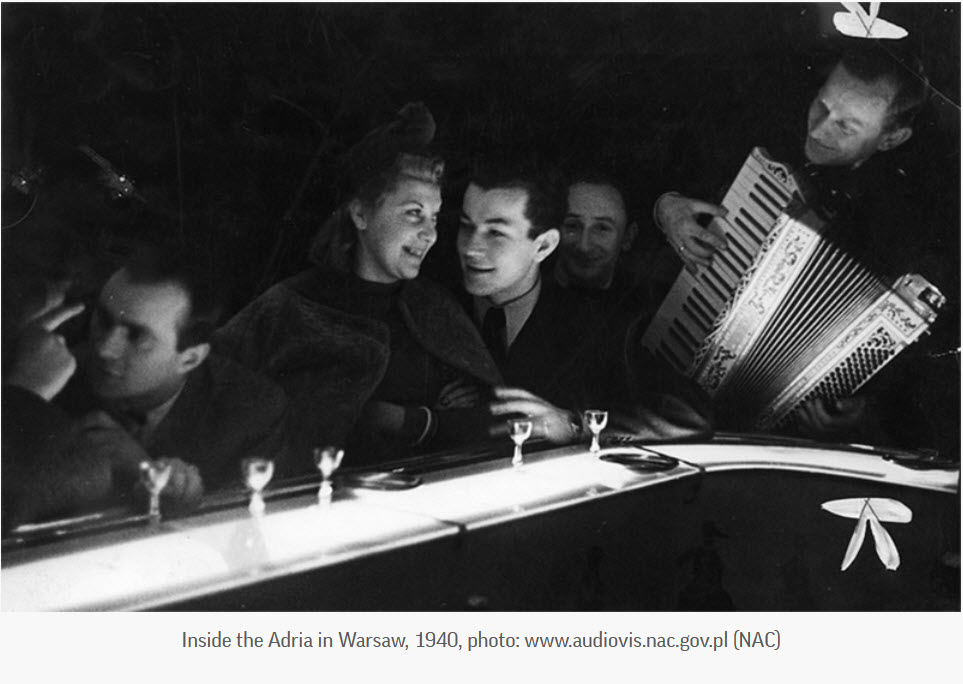
Alongside this development was the growth in popularity of theatres and cabarets, the most significant being the Qui Pro Quo theatre, led largely by Julian Tuwim and Marian Hemar, and, later, the Morskie Oko cabaret.
These two groups competed fiercely to recruit the best Polish stars of the interbellum era: artists like the now legendary Eugeniusz Bodo (often pictured with his dog, Sambo) and Mieczysław Fogg, who performed alongside Mira Zimińska, Zula Pogorzelska, Adolf Dymsza, and the smouldering Hanka Ordonówna.
Experiments in 1920s music, which at the time were coming thick and fast, now had epicentres from which new innovations and styles could thrive: Poland was beginning to embrace tango-fever like nothing else.
The Wall Street Crash and subsequent global economic downturn in the late 1920s hit entertainment establishments hard. Both Qui Pro Quo and Morskie Oko closed in 1933 – but the music passionately cultivated by the artists of these clubs only played louder, and interest in the style swelled. By the 1930s, Poland – and particularly Warsaw – was seeping with the sensuous melancholic passion of the tango, with new tunes churned out on a daily basis.
Above all, the record company Syrena Rekord, Poland’s first and arguably most eminent recording company, helped facilitated the development of this culture. Established in 1908 by Juliusz Feigenbaum to satisfy the Polish demand for popular music, Syrena Rekord was already booming on the eve of WWI, producing 2.5 million records a year.
But it was after the war that the popularity of the company truly soared: where other record companies fell following the economic depression, Syrena jumped from strength to strength.
The music of 1930s Poland that Wars helped produce was influenced not only by traditional Polish countryside folk motifs, but also by the cosmopolitan nature of the interwar state: after regaining independence, the Polish nation exploded in freedoms of cultures, languages and lifestyles, with Warsaw the pivot. Entertainment united these disparate voices in a pleasant environment, providing a means by which any style could be heard and appreciated.
This was particularly true for the Jewish population, who were integral to the Polish interwar music scene. Jewish composers, singers, songwriters and musicians, many of whom originated from families steeped in traditions of classical music, found liberty in popular culture, combining their efforts with other previously-silenced minorities and cultivating an original sound for the new nation.
The Syrena founder Feigenbaum himself epitomised this atmosphere: a Catholic of Jewish descent, he worked as a musician, composer, inventor and businessman – the ultimate cosmopolitan multi-talent that inspired a generation of Poles to follow.
Though Polish Radio was the driver behind the record business at the time, they only wanted to push the most renowned artists – making Syrena the only medium by which all the Polish popular music of the period, all the new melodies and styles and flairs, could reach the heights of fame. Waltzes like Szklanka Wina – Fest Dziewczyna!, slow-foxes like Już Jestem Taka Głupia, and foxtrots like Nikodem and Tokaj perpetually quavered from gramophones and echoed out of the doors of fashionable nightclubs across the country in the 1930s.
But it was the wealth of unique tango sounds that the Polish population craved the most. With its influences from Eastern European, Jewish and Gypsy music, these particular interbellum pieces spoke to the population like no other music could: a population characterised by a tumultuous history, an investment in multi-culture, and the desire for sophistication and charm.
Poles of the 1930s were allured by the exotic yearning desire of such music: the quivering Slavic intonations, the broken passion, and enigmatic performers. The artists themselves sustained the vision through the adoption of a multiplicity of enthralling pseudonyms, adding a soupçon of piquant mystery to the culture.
Biggest hits
The breakout tango hit of Syrena happened early: in 1929, Petersburski’s Tango Milonga [provided below] (with lyrics by Andrzej Włast) burst onto the scene and quickly became not only a national favourite but also a widespread international triumph, with the English title being Oh Donna Clara. The aching cadences and swelling Eastern European melody gave the piece a lively originality, and it is no wonder that it is still remembered by many as a classic interwar tune.
But there were also other tangos which had a momentous impact in Poland. The popular Umówiłem Się z Nią na Dziewiątą premiered in 1937, sung by Eugeniusz Bodo, with a legacy that lasts even today. The yearning 1935 hit Graj Skrzypku, Graj portrayed by the rich voice of Adam Aston and the charming tones of Mieczysław Fogg, among many others, was characteristic of the tango culture emerging at the time.
Meanwhile, the 1932 piece Rebeka, and its 1934 complement Rebeka Tańczy Tango epitomised the figure of the heartbroken female lover, a trope found in so many tangos of the period. Another of Petersburski’s greats, the ominous lament To Ostatnia Niedziela, nicknamed ‘Suicide Tango’, came in 1935 and still remains a symbol of pre-war Polish culture.
Here’s some examples.
See if any of you find it appealing.
There’s something about violins, Accordion & Concertina music. It gives me the chills. I hope you all enjoy this playlist.
An Interview with Noam Zylberberg
From HERE. All credit to the author, and kindly note that it was edited to fit this venue.
It was an exciting time in music history – there was nothing to base these songs on. The result was something simple but not simplistic. That’s what I love about it,’ says Noam Zylberberg. The musician, who is performing Polish pieces written and composed in the Interwar period, told us about the sound he is trying to resurrect.
Noam Zylberberg studied conducting at the Jerusalem Academy of Music. He became fascinated with interwar Polish music and established Mała Orkiestra Dancingowa (The Little Dancing Orchestra), which has played concerts in Poland and abroad. Their first album was released this year.
Juliette Bretan: So let’s start from the beginning. Where do your links to Poland come from?
Noam Zylberberg: My grandparents were born in Warsaw but left Poland in 1934. They were young. They wanted to follow their ideals and reinvent themselves. My grandmother’s family were Warsaw people going back many generations and so Warsaw has always been present in my life.
JB: When did you begin to become more involved with Poland and Polish culture?
NZ: I became curious after my grandparents passed away – I was still very young, but I began wondering about their pasts. They never spoke Polish at home, but I’d heard about their lives and families in Warsaw. This fascination followed me into my student years and still does till this day.
JB:Did your interest in interwar Polish music begin from that period?
NZ: Not really; It was a long time until I discovered this music. It all started through an interesting family connection – one of my grandmother’s cousins, Tadeusz Raabe, was a friend of Antoni Słonimski’s. Tadeusz was from a wealthy background – his family owned a factory.
When World War I broke out, they had to leave to Russia. During those years, Tadeusz spent time in Moscow and Saint Petersburg. That was when he discovered their modern art cafés and avant-garde culture – which didn’t exist in Poland at all.
Back then, Poland was in the midst of the Young Poland movement; art was very serious and patriotic. So when Tadeusz returned home, he opened the first modern art café in the city with Antoni Słonimski, who in turn brought with him Julian Tuwim. This was the famous Pod Picadorem cafe.
Later, he also married a well-known singer and movie star, Tola Mankiewiczówna. When I first learned about this, her name meant nothing to me. I found a video online of her singing the tango Odrobinę Szczęścia w Miłości (A Little Luck in Love). If I’m honest, I wasn’t that taken by it – it’s a video of her dressed as a maid, shining a shoe, and at that time I didn’t understand Polish, so I didn’t know what she was singing about.
JB: And when were you taken by these songs?
NZ: I gradually became more familiar with these songs, and as I started to learn about different individuals and pieces I began to think that it would be cool to do something with them, though I didn’t exactly know what. There was something special about these pieces. I was interested in the sound – it’s such a specific sound of the 1920s and 1930s.
The main genre of this style is the Tango.
It was popular all over Europe in the early years of the 20th century, but its life in Warsaw was longer than abroad. Tango was being danced to in Warsaw in the 1920s, but it was only towards the end of that decade that the local musicians began composing them. The first initiative was taken by Jerzy Petersburski and his cousins, the Gold brothers.
JB: What makes a tango Polish?
It’s difficult to answer the question of what makes a Polish tango. I don’t know if I have a good answer, but I suppose there’s a certain softness; the basics of tango are there, but everything else is from a different world. There’s a different warmth to it; it’s less aggressive.
One good example of a Polish tango is O Piękna Nieznajoma (O Beautiful Unknown Woman). It’s split into two parts – a chorus and an interlude. It’s very soft and lyrical; there’s an elegant countermelody in the background; it’s very sophisticated. It sounds almost like an aria from a Puccini opera. When the intersection comes, it’s like a reminder– ‘this is tango!’
That part is as if not connected to the rest of the song, and when the main theme returns, you can almost forget that it’s really a tango: the only thing that suggests tango at the beginning is the rhythm, like an engine in the background. Everything else is water.
JB: And what about the multicultural aspects of Poland back then – the mix of Poles and Jews and Ukrainians and other minorities?
NZ: It was multicultural – but they were all Poles. They all spoke the same language. Most of the Jewish composers and musicians came from assimilated families. They may have come from different backgrounds, but they shared similar values. Almost all of them were professional musicians, and they all received classical musical education.
They knew what they were doing – if they used a Jewish-sounding motive, it was done deliberately. The same way they also wrote songs in Spanish style about Spain, even though most of them probably hadn’t been there – for the audience, going to the cabarets and the theatres was their way of travelling and accessing something exotic.
They worked quickly. A piece composed one morning could be played the same evening. If something didn’t work the way they’d hoped, they could change it the next day. This way of work is like experimenting in a laboratory. This allowed a new style to take shape relatively quickly. They were even writing for particular musicians, basing their arrangements on who would be in the band on any particular day. One day, they might have three clarinets – so they would arrange the piece for them. The next day, they might have one – and so the next arrangement would be different.
The specific musicians and instruments played a big role in shaping this style. This is what differed it from early pop music played in Berlin or London at the same time.
JB: How were the instruments different?
NZ: A good example is the Hawaiian guitar, which features in so many songs from the period. The main musician playing it was a man called Wiktor Tychowski – he was crazy about the Hawaiian guitar. It’s actually him playing it in a lot of these recordings – the other musicians probably liked working with him – it featured so much that eventually it became a characteristic of the style. Tychowski was just one person but he left a mark – each of these individuals had influence.
JB: And what was the next step for you?
NZ: I spent a lot of time getting to know the style and the people, and then I went through the songs online and made transcriptions of them. Still in Tel Aviv, my idea was to collect a group of people together to play Polish tangos and have dance parties … you know, a very underground scene, playing in a dark basement with hipsters who don’t even look you in the eye – that kind of thing.
Eventually, I never actually set it up. Instead I started travelling to and from Warsaw and met up with some musicians in the city – and one day I just stayed. I spent my time making transcriptions and preparing scores – mostly tangos at that stage.
JB: So you said you transcribe these songs to be able to perform them?
NZ: Yes. When we talk about style, a lot of it has to do with instrumentation. The notes that were published and were available to the public have all the harmonic and melodic information but don’t include any instrumentation, so they’re not helpful for playing in the original style. So I use old recordings and transcribe them.
We try to follow the stylistic traditions of the time – it will never be 100% the same, and that’s not what we want. We’re different people living in a different world, and we’re not interested in imitation. But we try to think about it in similar terms to those in which they were thinking when they created it.
For example, the instruments didn’t change that much, but the technique and approach did. Back then violin players tended to use a lot of portamento – sliding from note to note. But today this is considered bad playing. I can’t ask my violinists to completely change their technique, but I want them to know about it. I want them to be informed, to listen and understand why it sounds the way it sounds.
JB: Do you think this music is coming back into fashion? There seem to be a lot of performers like you whose repertoires include these songs.
NZ: Yes, but each group is doing it differently. There’s room for everyone.
JB: Has this sound always been here, or did it dissipate in 1939?
NZ: In the late 1940s, for a few more years, you could still hear reminiscences of the style in Warsaw. But most of the musicians of the previous generation were gone by then – some perished in the war and other immigrated soon after – and the sound changed. The style back then was based on people; they made it the way it was.
JB: So what about those who survived and kept playing and singing – the best example being, of course, Mieczysław Fogg?
NZ: Fogg’s style changed – you could even say he was a different singer between the 1930s and the 1970s.
What Fogg did – what we owe him for the most – was to be a symbol. Because he was here, he became a symbol of old Warsaw. Some musicians who stayed couldn’t find themselves in the new world. But after the war, Fogg recorded the songs from the 1920s and 1930s in new versions. The songs Fogg didn’t record are mostly forgotten, and those he recorded are the ones we remember. He’s responsible for that.
JB: So what made the Interwar period special?
NZ: It was a peculiar and interesting time all over the world, and it was the beginning of pop culture. Before, there had been serious and folk music – but not pop. The world was changing quickly; technological advances and changes in the social structure changed the way people lived. Suddenly, you have recording and films that need music, and cities were getting larger. It was the first time in history when people had money and time and wanted to have fun. Consumers of culture grew, so there was a need for music.
This music had to be invented. There were questions – ‘How do you write a pop song?’ ‘How long should it be?’ ‘How should you sing one?’
Many of the early songs just don’t work anymore; they’re not relevant and no one speaks this way, so they can’t connect. But things changed – there was an influx of artists, many from Lwów (today’s Lviv), who could create charming rhymes and simple feelings.
JB: And how are your performances taking this into account? Are you performing at the moment?
NZ: There is still more to do – there always is. We perform at SPATiF [a club in Warsaw] regularly, and we have the album, which was produced with the support of Polish Radio.
Almost all of our musicians come from a classical background – they’re a bunch of people who are interested in exploring . None of them grew up with these sounds. This style is not natural for modern musicians. So we have to think: ‘How do we achieve this?’ So even just the way of thinking about the notes was something that we had to work out together.
One point is swing. Today, everyone knows what swing sounds like, but back then, it was something new and unnatural. When we started rehearsing, it sounded more like New York in the 1950s than Warsaw in the 1930s. We had to forget it. Even in concerts, I’ll remind the musicians not to swing. When you start swinging in these songs, everything falls apart and that engine dies. The piece gets heavier – it should be light.
JB: And do you have any favourite pieces?
NZ: One song which is close to me is Codziennie Inna (Different Every Day), which opens our album.
It wasn’t part of our original repertoire – but we had a concert in SPATiF and a couple of the musicians were running a little late. Eventually, we couldn’t wait any more so, in the meantime, I decided I would teach everyone a song. The orchestra didn’t know it either. They caught the melody, and the audience quickly learned the lyrics. By the end, everyone was singing together – it was a great experience.
These songs were a part of this city; these melodies were once hummed in the streets – but then they disappeared. When we did that concert with Codziennie Inna – the audience sang it 20 times. I’m sure it stuck in their heads. Some of them may have even hummed it to themselves on the street the next day.
It’s giving the city back its sounds.
Do you want more?
I have more articles like this in my Happiness Index here…
Life & Happiness
.
Articles & Links
Master Index
.
- You can start reading the articles by going HERE.
- You can visit the Index Page HERE to explore by article subject.
- You can also ask the author some questions. You can go HERE to find out how to go about this.
- You can find out more about the author HERE.
- If you have concerns or complaints, you can go HERE.
- If you want to make a donation, you can go HERE.

